Trees
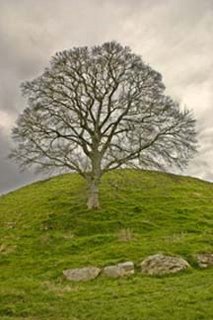 By Joyce Kilmer
By Joyce KilmerI think that I shall never see
A poem lovely as a tree.
A tree whose hungry mouth is prest
Against the sweet earth's flowing breast;
A tree that looks at God all day,
And lifts her leafy arms to pray;
A tree that may in summer wear
A nest of robins in her hair;
Upon whose bosom snow has lain;
Who intimately lives with rain.
Poems are made by fools like me,
But only God can make a tree.
Alfred Joyce Kilmer
(December 6, 1886 - July 30, 1918)
Now, all that shade had it good points - and its bad. Loved having the cooling shade on the house. Loved hearing the squirrels jumping onto the roof and romping around up there. Loved having the birds close enough to be able to see well enough to identify them. But, there was no place for a kitchen garden or flowers that required a lot of sun.
The Most Important Tree on the place was a huge, magnificent hackberry tree about 15 or 20 feet from the back of the house, if that far. If you've read my bird sightings list, you've already met The Most Important Tree. Because it was so near to the double windows in the kitchen's back wall, I was able to easily view and identify birds that were perching there or were gleaning insects from it. That article lists eight new-to-my-list, species spotted, identified, and listed while in that one tree.
Important it was: very long ropes that reached up into the canopy and hung from a strong limb supported the grandchildren's swing. Knowing that arborists' lives depend on the knots they tie in the ropes by which they climb and swing while doing their work, I asked those working here one day if they minded going up into that tree and securely tying the ropes for the children's swing. They seemed delighted at the idea, and one went scurrying right up. The swing was soon there in the tree.
The Important Tree held, not only the grandchildren's swing, but also a few bird feeders, an occasional hanging flower basket, the big outdoor thermometer we could read from the kitchen window, and an electrical convenience outlet was imbedded in its bark.
I asked the previous owner why was there an electricity outlet in the tree; she replied, "That's where we plugged in our bar-b-que."
The poor tree! The bark had been chiseled out to make a flat spot to mount the metal outlet and the tree's inner bark was trying to heal the wound by growing over it. In the meanwhile, once the bark of the tree was injured (same as when our skin is broken) bacteria and fungi were able to enter. Every summer a repulsive looking fungus grew all over one side of the large trunk and oozed a substance with a terrible stench.
But, what was interesting to this former biology major was Nature's cycle that took place not far from her kitchen window. There was some kind of colorful, black and red beetle that always appeared in large numbers, hundreds of them, to live, and breed, and feed on the oozing fungus. Then flocks of robins would hang around eating the beetles as if it were some great smorgasbord. Usually, there would be one bird that considered the whole party to be his stake and would try to keep the others away from his larder.
It was a forked tree, probably two trunks encased with one bark. The fungus first appeared in the crotched area between the two parts, then increased and spread more and more the following summers. The rotting taking place inside the tree was taking its toll. I knew I should have the tree taken out, but I was so fond of it, I kept putting it off.
Then one day in early April, Husband/Best Friend/Chief Photographer rushed into the kitchen saying, "That tree is falling, it's about to go!" I looked and one half was beginning to lean. I grabbed the phone and called the tree service company and explained what was happening. Then I said, "There it goes!" --- And the phone went dead as the tree ripped all the phone, cable, and electrical wires from the house. There went my tree! The Most Important Tree was half up and half now sprawled all over three flower beds, part of the back border, three pieces of flattened yard furniture, a smashed dry-laid stone wall, a raised bed of miniatures, the corner of the house (garage area), and two cars in the driveway were swamped and damaged! What a mess! What a shame!


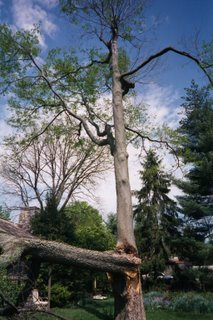

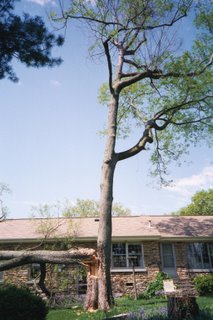 We feared the other half would fall any minute and it would surely land on the house, doing much damage.
We feared the other half would fall any minute and it would surely land on the house, doing much damage.

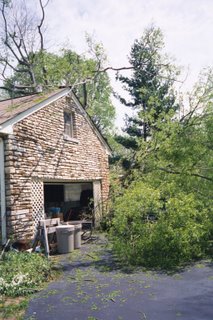 There are two cars under all that tree!
There are two cars under all that tree!


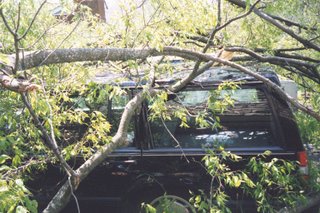

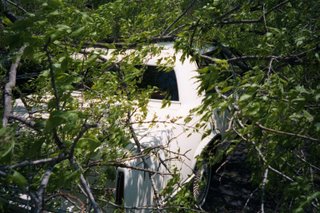

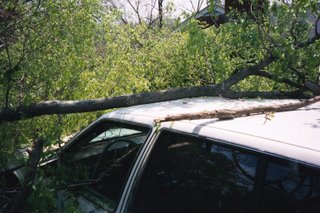
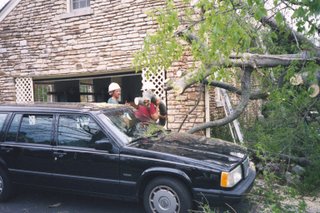


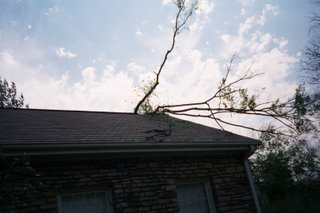
 That was about year 2001, and looking back, I now believe it was a good thing it fell when it did. For in February 2003, we had a super-duper ice storm that would have taken it right down onto the house for sure.
That was about year 2001, and looking back, I now believe it was a good thing it fell when it did. For in February 2003, we had a super-duper ice storm that would have taken it right down onto the house for sure.
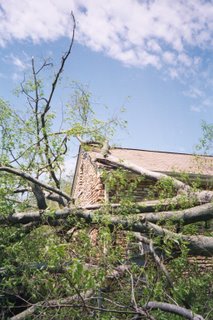
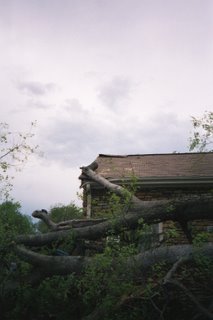
I recalled our visit to Stourhead in 1988 and the fact that they replace mature plants every twenty years. The inventory never changes, however, for if they remove a Magnolia stellata, for example, another Magnolia stellata is planted in its place. It's an ever on-going process that ensures nothing is too old or too sick, always young and healthy and in its prime. No danger of anything falling on a visitor or onto surrounding plants. I should have done that with The Most Important Tree… but, I just couldn't. I knew better, but I couldn't bring myself to do it. The Tree was just too Important, I couldn't let it go - until I had no choice.
Now you have seen "the way NOT to do this". I hope you will use the link you'll find below, and make a quick visit to Stourhead. There you will see something truly beautiful where gardening was done rationally.
Stourton is near Warminster, Wiltshire, England. Stour House is a Palladian-style villa built between 1721-1725. The extensive garden of the estate is one of the most perfect examples of the English Picturesque Garden Style one could ever find, complete with temples, follies, a turf bridge, and a grotto inside of which the little Stour River flows from its underground source, the head of the Stour River, therefore, the name "Stourhead".
I contacted Armin Grewe and was given his permission to post his website address here for your enjoyment. After you click on this link, and arrive at his site, look below the panoramic photo. There he has three links: Stourhead House, King Alfred's Tower, and Stourhead Garden. They are all worth viewing. He gives more about the history of the estate, so I'll let him "tell" you about it. When you get to the garden, be sure to scroll down and move your mouse pointer over each picture for identification.
So, enlarge your screen (key "F11" on mine), and enjoy...
|



<<Back to Home Page